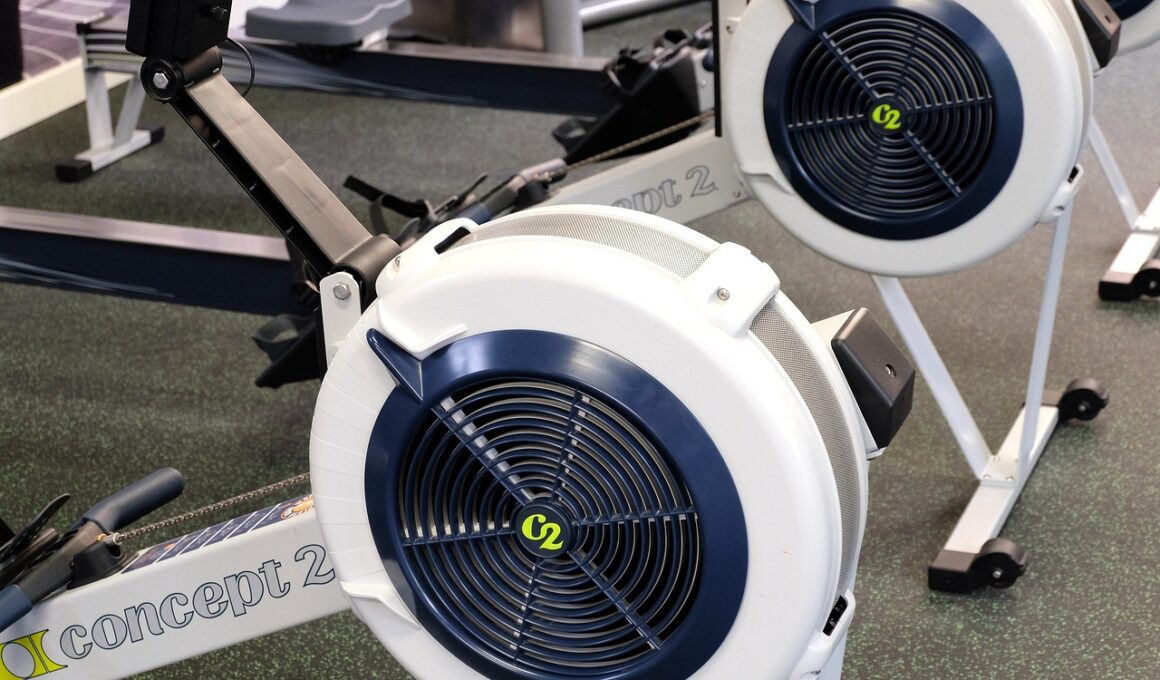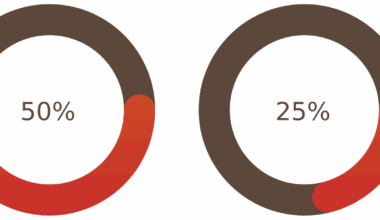Monitoring Your Progress: Using Technology for Rowing Training
Rowing has evolved significantly, embracing technology to enhance training regimens. Monitoring your progress is vital for any rowing athlete, and technology plays a crucial role in achieving this. Various devices can help track performance, analyze techniques, and provide valuable insights. For instance, rowers now frequently use heart rate monitors to gauge their intensity during workouts. Such monitors give instant feedback, allowing athletes to fine-tune their efforts for maximum efficiency. Additionally, stroke rate sensors can indicate the rhythm and timing of each stroke, enabling rowers to find their optimal cadence. Furthermore, GPS devices provide geographic data, helping rowers analyze their routes and speed on water. These technologies not only motivate athletes but also promote accountability during training sessions. With precise data from these devices, rowers can identify areas needing improvement and adjust training plans accordingly. The integration of apps that sync with performance indicators allows for easier analysis and tracking of progress over time. Athletes should consider incorporating such technological tools for comprehensive training progression in rowing, ensuring they stay ahead and continue to evolve as rowers.
Knowing how to utilize the collected data effectively is essential. Technology can provide overwhelming amounts of information, but it’s crucial to interpret that data correctly. Athletes should familiarize themselves with interpreting statistics and metrics presented by their devices. Understanding how heart rates correlate with performance outcomes and pace can significantly boost training efficiency. Moreover, integrating data analysis can enhance individual performances. Tracking personal records regularly helps set clear goals and motivates rowers to push their limits. Some rowing apps even offer video recordings of practice sessions to analyze technique. Reviewing these videos can highlight possible areas for adjustment, leading to improvements in stroke mechanics. Group training analysis encourages healthy competition while allowing teammates to share insights and tips based on their data. Coaches can also benefit from this technology, as it provides a foundation for personalized training plans. Beyond physical training, mental preparedness is paramount, and technology can help develop this aspect as well. Many apps include visualization tools to support focusing techniques and strategies, enabling rowers to increase their competitiveness on race day. Having a well-rounded understanding of their capabilities is essential for athletes aiming for excellence in rowing.
The Role of Wearable Technology
Wearable technology has transformed the world of rowing, promoting a data-driven approach to training. Devices such as smartwatches and fitness trackers continuously monitor vital signs and performance metrics. These wearables provide an easy way to keep track of training sessions, providing a constant feedback loop. Athletes can also access detailed data like calories burned, elapsed time, and distance covered. They allow rowers to align their workouts with personal fitness goals while offering insights into recovery rates after intense training sessions. As athletes become more accustomed to using these devices, they can set more specific and measurable performance targets. Analyzing trends over time offers insights into training effectiveness, helping to prevent injuries. By being aware of fluctuations in heart rate or other stats, athletes can make informed decisions about when to train harder or focus on recovery. Utilizing these wearables encourages rowers to be more proactive in their training management. Additionally, syncing data with mobile apps enables sharing of training progress, enhancing motivation through community support. The data gathered can significantly enhance rowing experiences, optimizing training outcomes and performance on the water.
GPS technology is another substantial innovation in rowing training. GPS systems help track distance, speed, and pace, providing valuable data about outdoor rowing sessions. It is especially beneficial for athletes who row on varied water bodies, as they can now assess their performance across different terrains. This information is crucial for planning training schedules effectively, whether competitors are practicing for endurance or sprint races. Relying on a combination of time-trial data and GPS insights enriches training strategies by ensuring diversity in workouts. Rowers can also compare their routes with previous runs, identifying portions that need improvement or enhancement. Another advantage of GPS data is its ability to help athletes realize their physical capacity over distances. Understanding how to pace themselves based on real-time data ensures that rowers maintain performance without excessive strain. This technology integrates well with standard training regimens, offering new dimensions of analysis and strategy. As such, embracing GPS technology should be a core aspect of any serious rower’s training plan, reinforcing the principle of informed training methods. Current technology empowers athletes to reach their peak potential while ensuring smart training regimens.
Utilizing Apps for Progress Tracking
Various applications have emerged tailored specifically for tracking rowing performance and progress. These apps serve as digital training logs, allowing rowers to log daily workouts, track improvements, and analyze performance metrics efficiently. Many such platforms connect directly with wearable devices, making the data accessible in one place. Additionally, rowers can utilize features such as goal setting, which aids in establishing specific outcomes for their training sessions. Being able to visualize progress encourages accountability and motivates athletes to stay consistent. These applications often contain social integration features, enabling rowers to connect with fellow athletes, share achievements, and create a supportive community. For coaches, utilizing apps simplifies providing feedback and developing training plans, as it centralizes numerous performance indicators. Understanding how to navigate these tools can dramatically enhance an athlete’s performance trajectory. By setting quantifiable objectives via these platforms, rowers can benchmark their performance over time, further refining their strategies. As technology continues to evolve, staying updated with the best applications in the rowing community is essential for any dedicated athlete who aims to excel in their sport.
Regular communication with coaches regarding training metrics can maximize the effectiveness of rowing technology. Coaches often bring expertise and experience in interpreting data, enabling them to provide tailored advice based on performance. A coach can interpret various metrics effectively to identify strengths and weaknesses in a rower’s training regimen. By working in collaboration with technology, they can offer nuanced training strategies to enhance every athlete’s unique attributes. Feedback can include technique adjustments, suggested modifications to workouts, or recommendations on rest days, ensuring a well-rounded approach to training. Effective communication also helps build trust between athletes and coaches, crucial for fostering a positive training environment. Moreover, integrating technology into coaching can optimize team training by aligning efforts efficiently, minimizing wasted time and enhancing performance. With effective teamwork and shared metrics, teams can develop a cohesive training strategy for competitive events. Encouragement from coaches ensures athletes are motivated and feel supported in their goals while progressing. Challenging training sessions, underpinned by technology and expert guidance, enhance resilience, technique, and overall performance. Ultimately, relationships supported by technology foster greater understanding and continuous improvement in rowing athletes.
Future Trends in Rowing Technology
The future of rowing technology appears promising, with innovations focusing on enhancing performance and training efficiency. As technology develops, we can anticipate improvements in analytical tools that provide deeper insights into rowing techniques. Advanced sensor technologies may become more accessible, helping rowers monitor not only their physical performance but also key biomechanical factors influencing efficiency. Wearable technology will continue to evolve, integrating real-time feedback mechanisms that enable athletes to adjust their technique during workouts. Moreover, virtual and augmented reality could revolutionize how rowers train and visualize race conditions, simulating real-world scenarios for practice. These advancements aim to improve the overall rowing experience, prioritizing athlete health while pushing performance boundaries. As such, future training programs will likely incorporate interactive elements that engage athletes uniquely. Integration with artificial intelligence may allow rowing technology to analyze larger data sets, identifying trends and patterns beyond typical capabilities. Staying current with these innovations will enable dedicated rowers to gain a competitive edge. Ultimately, embracing emerging technologies can substantially enhance performance outcomes, turning aspiring athletes into champions competing at higher levels and resilience.
In conclusion, technology is deeply ingrained in modern rowing training, offering athletes the tools necessary for continuous improvement. Monitoring progress is essential, enabling rowers to leverage critical data for enhancing performance. Devices, applications, and tools ensure that athletes remain informed and accountable in their training journeys. Incorporating technology not only augments physical performance but also promotes mental preparation, creating a well-rounded athlete. Additionally, the rapport maintained between athletes and coaches through data-driven insights establishes a relationship based on trust and performance enhancement. As rowing continues to embrace innovative technologies, athletes must adapt and integrate these scientific advancements to realize their potential fully. Training regimens infused with technology inspire a competitive spirit while prioritizing health and well-being. As competitive rowing evolves, being proactive in adopting new practices can make a significant difference in performance outcomes. The sky’s the limit as athletes continue to explore the intersection of technology and sport. Ultimately, the effective utilization of rower’s data will pave the way for a new era where technology and performance intersect seamlessly, ensuring success on the river and beyond.


